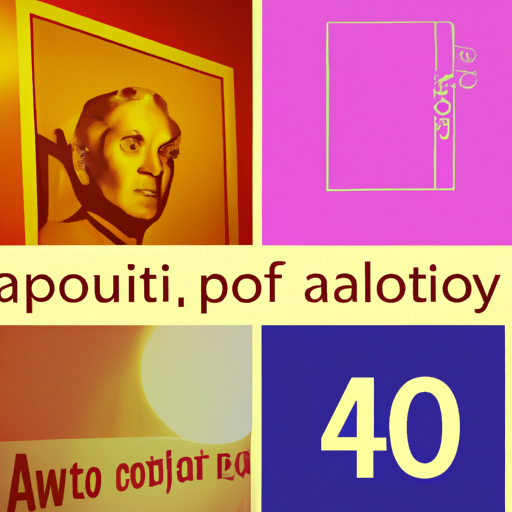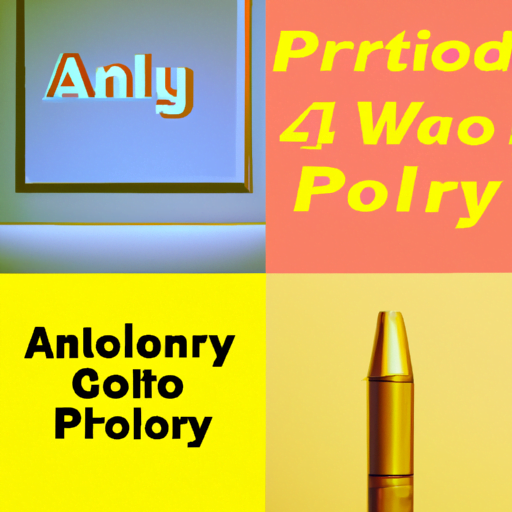
-
Table of Contents
- Exploring Display Typefaces and Their Usage
- What are Display Typefaces?
- The Importance of Choosing the Right Display Typeface
- Examples of Effective Display Typeface Usage
- 1. Coca-Cola
- 2. Vogue Magazine
- 3. Disney
- Considerations for Choosing Display Typefaces
- Combining Display Typefaces with Text Typefaces
- Conclusion
Exploring Display Typefaces and Their Usage

Typography plays a crucial role in design, and choosing the right typeface can greatly impact the overall look and feel of a project. Display typefaces, in particular, are designed to grab attention and make a statement. In this article, we will explore the world of display typefaces, their usage, and how they can enhance various design projects.
What are Display Typefaces?
Display typefaces, also known as decorative or headline typefaces, are designed to be used at larger sizes, typically for titles, headlines, logos, and other prominent elements in a design. Unlike text typefaces, which are optimized for readability at smaller sizes, display typefaces are created to make a visual impact and evoke a specific mood or style.
Display typefaces come in a wide range of styles, from elegant and sophisticated to bold and playful. They often feature unique and intricate letterforms, with exaggerated proportions, elaborate serifs, or unconventional shapes. These characteristics make them stand out and draw attention to the text they represent.
The Importance of Choosing the Right Display Typeface
When it comes to design, choosing the right display typeface is crucial for effectively conveying the intended message and creating a visually appealing composition. Here are some reasons why selecting the appropriate display typeface is important:
- Establishing Brand Identity: Display typefaces can help establish a brand’s visual identity by reflecting its personality and values. For example, a luxury brand may use an elegant and sophisticated display typeface to convey a sense of exclusivity and refinement.
- Setting the Tone: Display typefaces can set the tone and mood of a design. A bold and playful display typeface may be suitable for a children’s book cover, while a vintage-inspired typeface can evoke a sense of nostalgia for a retro-themed event.
- Creating Hierarchy: Display typefaces can be used to create visual hierarchy within a design. By using a different display typeface for headlines and subheadings, designers can guide the reader’s attention and make the content more scannable.
- Enhancing Visual Appeal: Display typefaces are designed to be eye-catching and visually appealing. They can add personality and uniqueness to a design, making it stand out from the crowd.
Examples of Effective Display Typeface Usage
Let’s explore some real-world examples of effective display typeface usage:
1. Coca-Cola
The Coca-Cola logo is a classic example of effective display typeface usage. The script typeface used in the logo, known as “Spencerian Script,” has become synonymous with the brand. It conveys a sense of nostalgia and tradition, while also exuding a friendly and approachable vibe.
2. Vogue Magazine
Vogue magazine is known for its elegant and sophisticated design. The use of the display typeface “Didot” in the magazine’s logo and headlines adds a touch of luxury and refinement. The high contrast and thin serifs of Didot create a sense of elegance and timelessness.
3. Disney
Disney is a brand that appeals to both children and adults. The display typeface used in the Disney logo, known as “Waltograph,” captures the whimsical and magical essence of the brand. The playful letterforms and the subtle reference to Walt Disney’s signature make it instantly recognizable.
Considerations for Choosing Display Typefaces
When selecting a display typeface for a design project, there are several factors to consider:
- Legibility: While display typefaces are meant to be visually striking, it’s important to ensure that they remain legible, even at larger sizes. Avoid overly ornate or intricate typefaces that may hinder readability.
- Consistency: Consider the overall visual language of the design and ensure that the display typeface aligns with the other design elements. Consistency is key to creating a cohesive and harmonious composition.
- Audience and Context: Understand the target audience and the context in which the design will be used. A display typeface appropriate for a music festival poster may not be suitable for a corporate annual report.
- Accessibility: Ensure that the chosen display typeface is accessible to all users, including those with visual impairments. Consider using alternative text or providing a fallback option for screen readers.
Combining Display Typefaces with Text Typefaces
Display typefaces are often used in combination with text typefaces to create a balanced and visually appealing design. Here are some tips for effectively combining display and text typefaces:
- Contrast: Choose display and text typefaces that have contrasting characteristics to create visual interest. For example, pairing a bold and geometric display typeface with a clean and simple text typeface can create a dynamic composition.
- Hierarchy: Use display typefaces for headlines and subheadings to establish hierarchy and guide the reader’s attention. Pair them with a legible text typeface for the main body of the content.
- Consistency: Ensure that the display and text typefaces complement each other and maintain consistency throughout the design. Consider factors such as letterforms, proportions, and overall style.
Conclusion
Display typefaces are powerful tools that can enhance the visual impact of a design. By carefully selecting the right display typeface, designers can establish brand identity, set the tone, create hierarchy, and enhance visual appeal. However, it’s important to consider factors such as legibility, consistency, audience, and accessibility when choosing and combining display typefaces. By understanding the principles and best practices of display typeface usage, designers can create compelling and visually stunning designs that effectively communicate their intended message.
